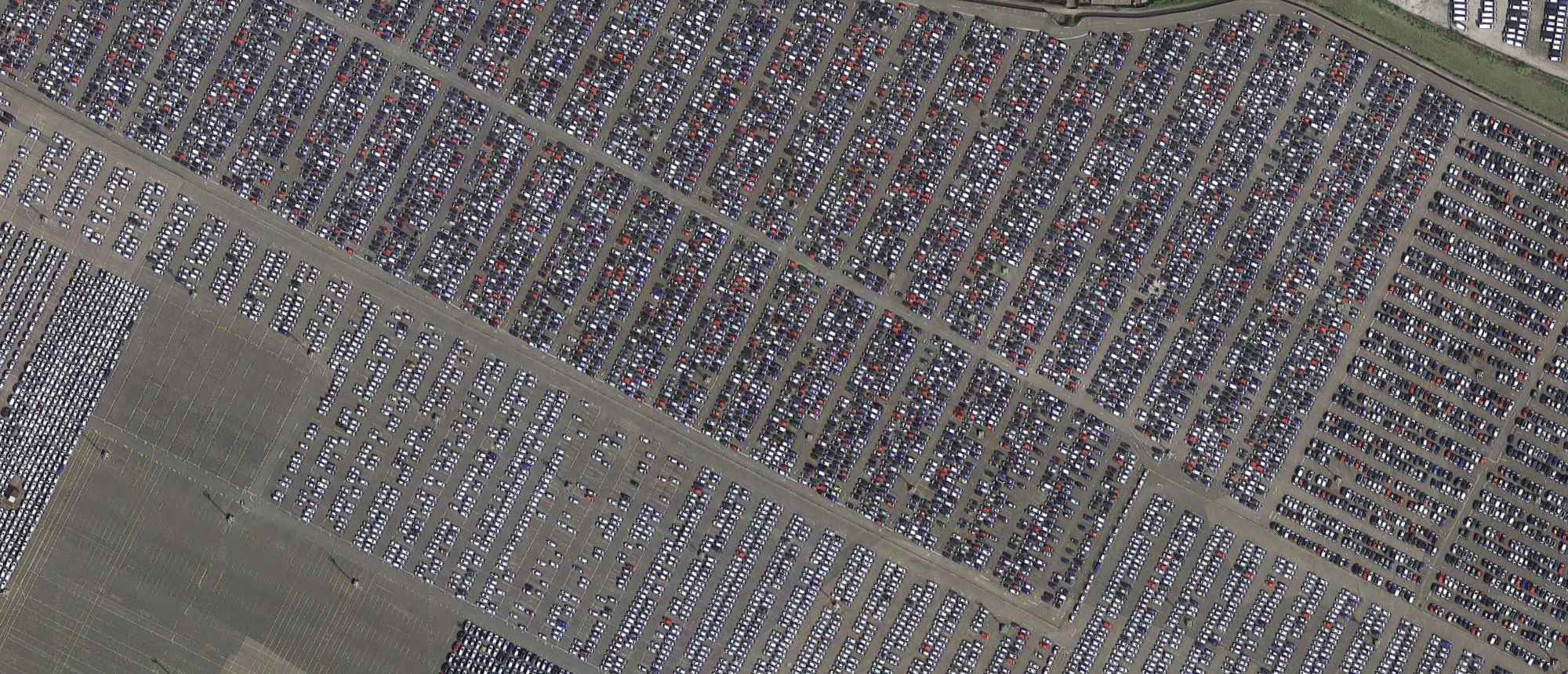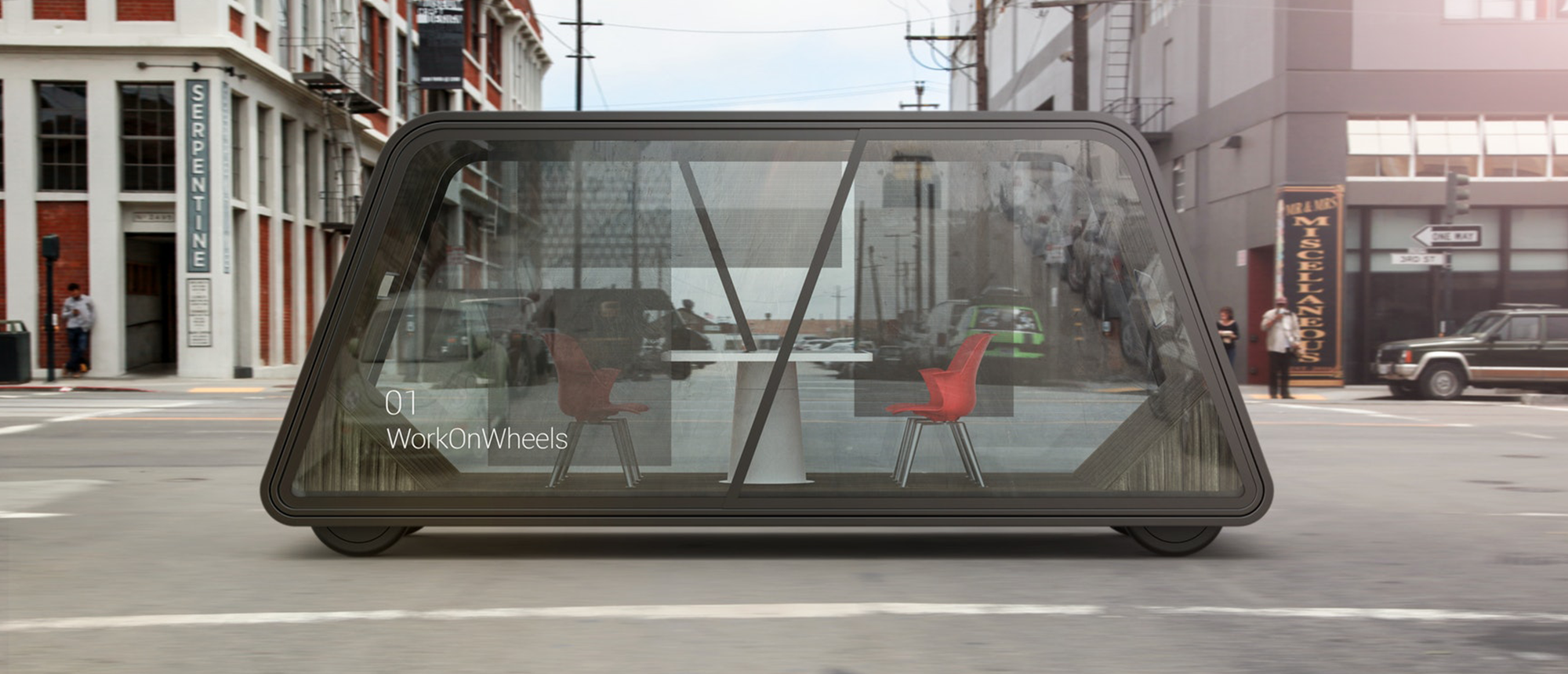From Hackernoon:
How driverless vehicles can enable on demand accommodation for one night or 1000, and at rates 10x cheaper [sic] than your rent bill
“Good evening ladies and gentlemen, we’re about to begin our descent into Sydney. Please fasten your seatbelts and place your trays in the upright position. Local time is 8:42pm and a humid 27 degrees. Our flight crew wishes you a Happy New Year, and we hope you fly with us again in 2025.”Screeech. You’ve landed. Time to relax those butt cheeks.It was only this morning you booked this flight, and now you’re on the other side of the planet. Amazing. You’re nervous but excited to visit Australia for the first time. One week to explore the city and five weeks on a new design project. When that project match showed up in your feed you claimed it in two seconds. You’ve already earned 24,000 $design in the peerism economy.Ping. “Need a room?”.You hadn’t booked any accommodation yet. “Yes please”, you respond.“Just out the front, number 420”.You giggle, then follow the augmented directions leading to a sleek driverless hotel room. It’s about the size of a mini bus but without the seats, steering wheel and engine. A giant transparent panel stretching the length and height of the vehicle greets you on approach. The panel opens and you step inside.Inside is everything you’d expected. On the left, a couch seat that folds into a queen-sized bed with the push of a button. To the right, a small kitchenette with electric stove, running water, sink, microwave and bar fridge. Behind that is the detachable bathroom module with toilet, shower and wash basin.“Hi there, welcome home. Hungry?”“I could go some pad thai and a beer thanks”, you respond.“That’ll be here in 6 minutes. Want a quick tour of the city?”“Nah early one tonight. Let’s checkout Bondi beach tomorrow”, you say.Your room begins driving itself towards Bondi and a live map displays on one of the side panels. You sit back and relax with some Netflix on the other side panel. Exactly 6 minutes later, a drone lands on the roof and lowers your order through a compartment in the ceiling. If you need to order any package you simply ask the room and a drone arrives; it even does laundry!“Arriving at Bondi Tower 7”.You look up at a lego-like modular skyscraper reaching high above the moonlit clouds. Your room docks with an electric skate and is elevated thirty stories up before slotting into a window-facing position. One of the side panels opens smoothly to reveal a large adjoining living room module.
Extra modules are optional and can be requested ondemand: an extra bed, private gym, spa, snackbar, office and more. On various levels of the tower are cafes, restaurants, retail stores, entertainment areas, communal kitchens, laundromats, a gym and even a cinema. Luxury living at $30 per night.
You fall asleep as your driverless hotel room recharges itself ready to take you on an extensive tour of the city and beaches tomorrow. Your six week experience will be personalized to your precise ondemand preferences including invites to local communities, events and interest networks.“Goodnight”.

Crisis of Car Manufacturing
The image above is a screenshot of the thousands of new, unsold cars sitting at a dock in a town named Sheerness in the United Kingdom. This is one of hundreds of locations where new cars sit empty and unused. And while auto manufacturers typically keep a 60 day supply, US manufacturers hit a record high of over 4 million unsold vehicles in their inventory in 2016.The issue of overproduction is a common crisis in Capitalism where more goods are produced than there are customers to consume them. In a free market this should result in prices dropping until the excess supply lowers to meet demand. But what typically happens is that manufacturers either artificially restrict supply or resort to simply destroying the unsold goods.Vehicle manufacturing faces a unique challenge with oversupply because the production lines are very expensive to initially setup and very expensive to stop. When a vehicle production line is down it costs $22,000–50,000 per minute in lost revenue and wage costs. So you can bet that if a particular car model isn’t selling, they’ll continue to produce until the next year’s model.The inevitable reality of ondemand self-driving cars poses a huge looming existential risk to the entire auto industry.With nearly 1.3 billion vehicles on the planet and more than 94 million new cars rolling off the production lines each year, the auto industry looks rather similar to a runaway AI paperclip maximizer; consuming vast resources to sell thousands of various car models, which we then park idle for 95% of the time.However if on demand driverless vehicles come to fruition then your $10 Uber ride suddenly becomes a sub-$1 ride anywhere in the city. At that point the appeal of owning a car will diminish for most of the population, thus creating a massive oversupply of unwanted human-driven vehicles.
Given the forecasts of 2 billion vehicles on the roads by 2040, and considering driverless vehicles need only be idle while recharging, we can roughly calculate that only 100 million on demand driverless vehicles will be required to replace all 2 billion human-driven vehicles.
In other words, when every auto manufacturer begins producing the high-demand self-driving cars it will take just one year to reach oversupply.How and to where will auto manufacturers pivot to stay alive? One of many IDEO Automobility Moving Spaces concepts
One of many IDEO Automobility Moving Spaces conceptsModular Driverless Rooms
The key concept to grasp with driverless cars is that they truly redefine all of our assumptions and preconceived notions. Combustion engines are replaced by two small electric motors, the dashboard and steering wheel are unnecessary, and safety features are redundant when the cars don’t crash.Driverless vehicles are simply rooms sitting atop an all-electric drivetrain and rechargeable battery pack with a few extra visual, laser or radar sensors.
Tesla Powertrain
In a Tesla Model S there are only 18 moving parts compared to the 1500 in an average internal combustion engine vehicle. As such it’s predicted that by 2025 all new vehicles produced will be 100% electric and cost much less than the cheapest combustion engine vehicles sold today.This opens endless possibilities to re-imagine vehicles as moving rooms able to cater to a vast array of human experiences and activities:
- the driverless office
- the driverless boardroom
- the driverless gym
- the driverless bedroom
- the driverless bathroom
- the driverless cafe
- the driverless cinema
- the driverless shop
These rooms need not be used in isolation either. They can be dynamic, modular and interconnected with other driverless rooms via an ondemand request. Tap a button or speak a request, and moments later you can have a bathroom or gym module drive itself to your location and autonomously connect to the office module you’re currently working from.....
If you enjoyed this, you’ll love my post on driverless van homes!
...MUCH MORE